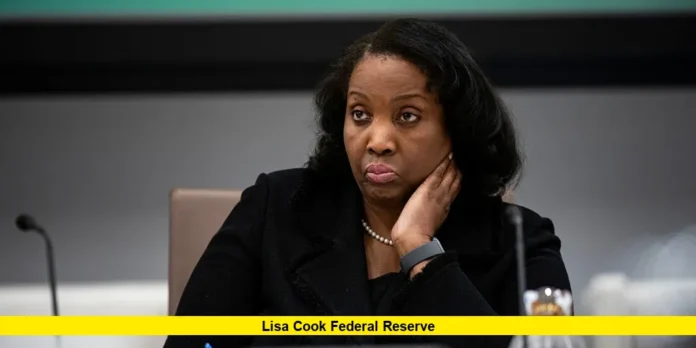President Donald Trump has made history—Lisa Cook Federal Reserve leadership is now at the center of an unprecedented controversy. Trump has formally removed Governor Lisa Cook from her position on the Board of Governors of the Federal Reserve, citing mortgage fraud allegations. This is the first time in U.S. history that a sitting Federal Reserve governor has been fired.
Trump announced the decision publicly, saying the dismissal was effective immediately. He accused Cook of misrepresenting two different properties as primary residences within a short time frame, allegedly to gain favorable mortgage terms. These accusations surfaced earlier this month and quickly escalated into a political and legal flashpoint.
Cook, who was appointed in 2022 and confirmed in 2023 to serve a 14-year term, has denied all wrongdoing. She has rejected calls to resign and vowed to defend her integrity while ensuring transparency in her financial disclosures.
Table of Contents
Key Points Summary
- Historic Dismissal – Lisa Cook has become the first Federal Reserve governor to be removed from office.
- Mortgage Allegations – She faces claims of misrepresenting property details to secure mortgage benefits.
- Market Reaction – The U.S. dollar weakened while bond markets shifted as investors weighed the impact.
- Legal Challenge Likely – Cook is expected to contest the decision in court.
- Fed Autonomy in Question – The move sparks fresh debate about the independence of U.S. monetary policy.
Market Reaction and Economic Impact
Financial markets immediately felt the shock. The dollar fell against major currencies, while Treasury yields moved in mixed directions. Short-term yields dropped, signaling bets on faster interest rate cuts, while longer-term yields edged up as uncertainty grew.
Investors are now watching closely for any ripple effects on the Fed’s interest rate strategy. The sudden removal has fueled speculation that the White House may push for more aggressive monetary easing. Analysts warn that such political intervention could undermine confidence in the Fed’s independence, a cornerstone of global financial stability.
Legal and Constitutional Questions
The removal of Lisa Cook is likely to spark a prolonged legal battle. Federal Reserve governors serve fixed 14-year terms and can only be removed “for cause.” Traditionally, this standard has been interpreted to apply only in cases of misconduct, not disagreements over policy.
Legal experts anticipate that Cook will challenge the dismissal in court. The outcome may set a precedent defining the limits of executive power over independent financial institutions. Some observers believe the case could eventually reach the Supreme Court, given the constitutional questions it raises.
Implications for Federal Reserve Governance
The firing opens a vacancy on the Federal Reserve Board that Trump could fill with an appointee more aligned with his economic vision. This may shift the balance of decision-making within the central bank, especially as it faces critical choices on inflation, employment, and interest rate policy.
The controversy also raises questions about the future of Chair Jerome Powell’s leadership. While Trump has long been critical of Powell, legal protections make it more difficult to remove a Fed chair than a governor. Nonetheless, this latest move highlights the growing political pressure on the central bank.
What Comes Next
- Court Battles: Cook is expected to pursue legal action, which may drag out for months.
- Market Uncertainty: Investors will remain cautious as they gauge the Fed’s ability to maintain credibility.
- Policy Shifts: Trump’s next appointee could tilt the Fed toward policies more favorable to the administration’s growth agenda.
In closing, the Lisa Cook Federal Reserve episode is more than a personnel dispute—it represents a defining moment for the independence of America’s central bank. The outcome of this conflict could reshape the balance between political power and monetary policy for years to come. Share your views below on what this means for the future of U.S. economic stability.
